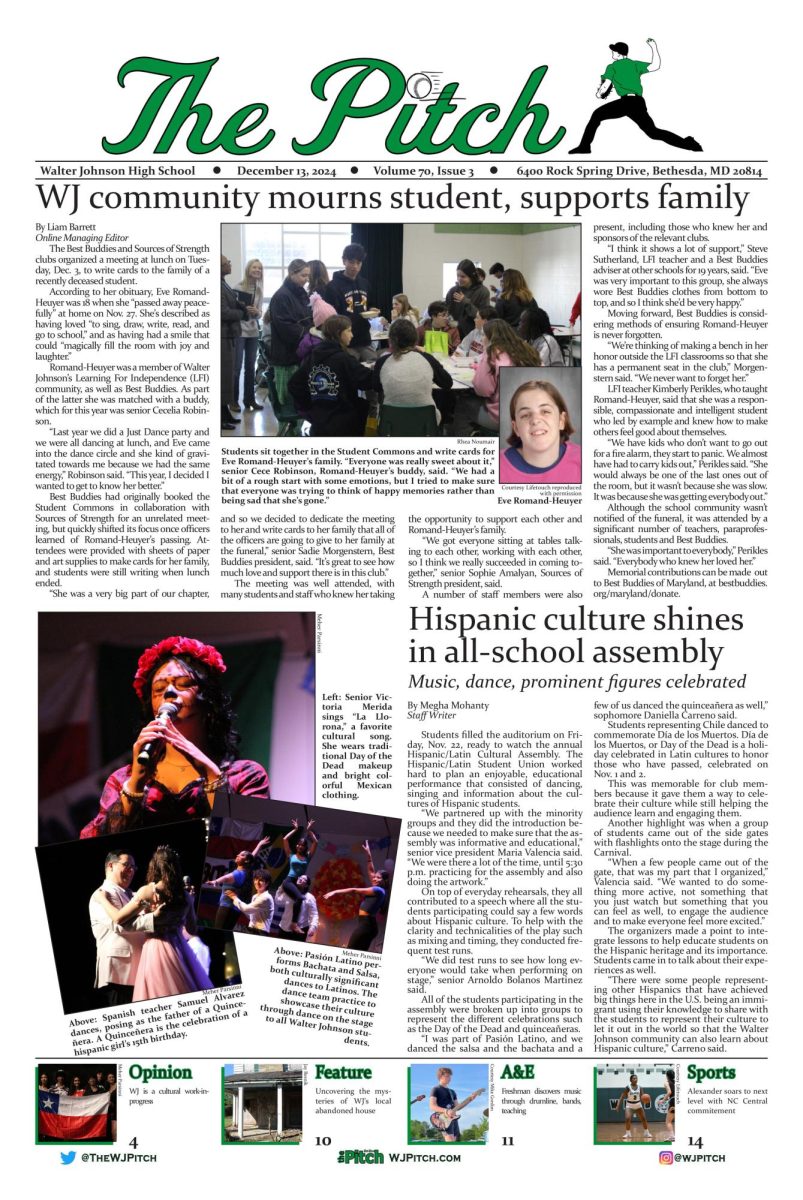Breakfast is said to be the healthiest meal of the day, correlating with success at school and the ability to stay awake. Yet, many still never eat it, often because they are always hurried or are just not hungry.
After breakfast, it is common for students to snack on food throughout the day. There are always those students who can be seen lifting a snack out of their backpacks, maybe even during more than one class.
“There are some people that, every day, take out a snack in a certain class,” said junior Grace Leslau. She sees this more often in morning classes, as does Family and Consumer Sciences teacher Connie Pokress.
According to Pokress, eating many small snacks throughout the day can be healthier than having only a few large ones. However, many students consume snacks lacking in nutritional value because they have higher priorities than healthy eating. At the moment, it may seem like schoolwork, clubs, sports or other activities are more important than locating and bringing in a healthy snack.
“Lots of times people think snack foods need to be packed by a company,” said Leslau. “[But] people can make their own snacks that are much healthier.”
Kids are consuming a much higher amount of sugar, calories and snacks than they used to. According to a survey conducted by the Rudd Center for Food Policy & Obesity, at Yale University, cereals marketed toward children have on average 85 percent more sugar than those geared toward adults. High school students can be seen eating chips, candy and cupcakes that rival kids’ marshmallow cereals and food-colored juice boxes in malnutrition.
However, skipping snacks altogether, similar to skipping breakfast, is no solution. Snacks are advantageous for keeping up one’s energy and nutrients during a busy day, and energy deprivation is never healthy. Also, snacks can provide essential energy for students who play sports after school and have no time to go home and eat a meal. Basically, snacking boils down to individual decision-making. Although students are offered vending machines and open lunch, only they have control over what they eat, just as much as they do when they bring foods from home.
“I don’t think open lunch hinders nutritious snacks at all,” said Pokress.
She recognizes that high school students’ eating patterns are as varied as those of the country as a whole. She suggests that they come up with a plan to improve their own snacks.
Some healthy snacks that can be brought to school include fruits, vegetables and whole grains, such as cereals, granola bars and nuts. If a snack is processed, the ingredients should be reviewed. Even if the front of the snack promises a low fat treat, it may still contain trans fats, preservatives or artificial flavors. In fact, many low fat foods contain high amounts of sugar to compensate for any lack of flavor.
“A nutritious snack can be beneficial for the day,” said Pokress.
Overall, eating right can improve one’s mood and ability to learn. Packing a healthy snack is easier than struggling through the day with nothing to eat.













![Senior Tiffany Gibson has dinner with her parents and her nine year old sister. Gibson's family has been her largest source of support throughout her treatment process.
"[My dad] helped me through it. He was the one who’d take me to my doctor’s visits, he was trying to make me try to take my medication on time, even though he’d get angry when I didn’t take it. I had to do blood work, so he would always find out. He would always try to get me to take it and remind me," Gibson said.](https://wjpitch.com/wp-content/uploads/2023/03/92iA4Tg7fGWMhmk9DKWf7Q6UQQ4p0LYeBobwwvV7-900x672.jpg)
